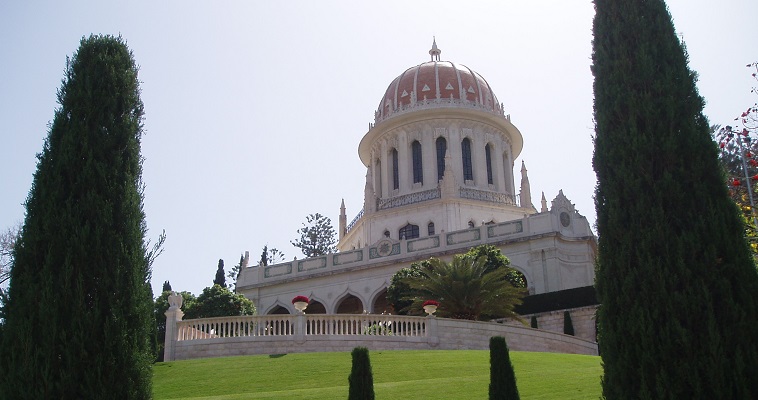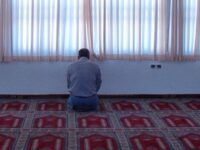Sacred Architecture of Sacred places
The manifestations of holiness can be traced back to the prehistoric period at special natural locations, yet the Sacred places discussed in this book are predominantly constructed environments, with the exception of Rujum al-Hiri, which features both natural and built elements. Consequently, one of the themes directly related to the exploration of Sacredness Generators in charismatic Sacred places is the study of Sacred Architecture. This subject is extensively addressed in the book by American professor Thomas Barrie[1].
Barrie argues that the human body plays a crucial role in connecting with a place, emphasizing that the emotional, movement, perceptual, and cutaneous (physical) sensations experienced at a place are paramount[2]. This perspective is linked to the fields of phenomenology and psychology. He asserts that the sensory experience of Architecture must be integrated into any interpretation of its meaning and symbolism. Therefore, a more comprehensive understanding of Architecture and its impact can only be achieved through looking at the dynamics of a spatial sequence and the series of symbols it presents.
Barrie draws on the insights of Norwegian architect Christian Norberg Schulz (1926-2000), positing that Architecture plays a pivotal role in helping individuals find their place in the world. According to Norberg Schulz, Architecture’s capacity to convey meaning enables people to find a universal and existential foothold—a place that offers possibilities for action within the world. Norberg Schulz describes humans as residing between heaven and earth, in an intermediate, liminal zone where they construct to create order in reality and to articulate the world around them. Thus, the primary function of Architecture is to organize reality. It caters to the human need to perceive life as meaningful, essentially aiding in the understanding of the universe and our place within it[3]
Barrie emphasizes the use of phenomenological concepts to explain how individuals perceive space, particularly through a hermeneutic-phenomenological approach. This method bridges the gap between the formal and historical aspects and the subjective and relative dimensions by establishing connections among subjects and between the subjects and the Sacred place, encapsulating the experience housed within it. He discusses how the historical, cultural, environmental, political, liturgical, and religious contexts of a place, along with the shared transcendental aspects of the human condition found there, forge essential relationships between Architecture, its myriad connections, and human experience. In this framework, Architecture is positioned at the forefront of man’s relationship with the world, forming a triangular dynamic where man interprets the Architecture and, through it, the world[4]. This phenomenological perceptual process thus creates a Sacred place that is predominantly constructed and architectural.
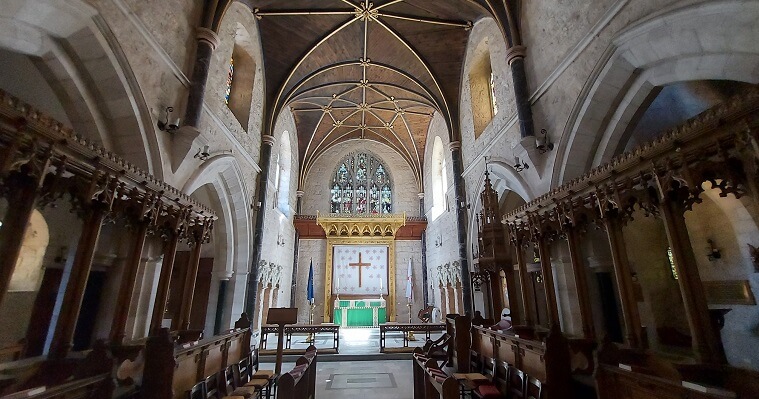
Barrie discusses the profound impact of Sacred Architecture within the context of emotional, affective interpretation, and phenomenology, noting its ability to deeply “touch” a person[5]. However, he points out that not all Architecture achieves this effect, highlighting a crucial distinction between charismatic places (as termed in this book) and “grey,” indifferent places. For Architecture to truly “touch” someone, it must evoke something—be it beauty or order—and blend the individual with the space. Barrie argues that there are places constructed not just intellectually (“with the head”), but also with heart and soul. For a person to truly connect with a place, they must “make love” to it, a process that occurs only in spaces that manage to “touch” them. In the terms used in this work, these are the charismatic places that resonate on a deeper, more personal level with individuals.
Barrie elaborates that the aim of Sacred Architecture is to facilitate a transformation in human awareness, elevating individuals from one level to another. This concept mirrors the ideas presented by Eliade, who contrasts the mundane—everyday, casual, and routine—with the Sacred, characterized as eternal and significant. Barrie adds a novel perspective by suggesting that Sacred Architecture achieves this transformative effect by inducing two complementary states in an individual, essential for the shift in awareness: one of silence and the other of assertion
According to Barrie, the engaging qualities of a place stem from dynamic relationships between the visitor and the site itself. These relationships operate both on a formal and a metaphysical level. The site extends an invitation to the visitor for mutual engagement, initiating a playful interaction with its spaces and surfaces. This involves a visual and spatial enticement that encourages the visitor to enter and participate in a form of dialogue and relationship with the environment. The entryway itself is designed to be inviting, fostering this sense of welcome and interaction[6].
Barrie builds on the premise that the true essence of religion is centered on change and transformation, a view that sometimes contrasts with traditional cultural and social understandings. Consequently, he argues that Sacred Architecture should facilitate change and movement[7]. According to him, while a Sacred building may represent a model of the universe, it is also designed to provoke movement and evoke engagement, which means the Architecture can sometimes appear aggressive, disorderly, and even controversial. The effectiveness of Sacred Architecture, in Barrie’s view, lies in its ability to inspire movement within the individual; thus, it does not necessarily need to be conventionally beautiful, although Barrie acknowledges elsewhere that beauty plays a crucial role in soothing the individual and connecting them to a realm of ideas. As a prime example of such impactful Sacred Architecture, Barrie cites the Church of the Holy Sepulcher in Jerusalem[8].
According to Barrie, the qualities that contribute to the quieting influence of purposeful Architecture include order, cohesion, and beauty. These elements are essential for creating an environment conducive to reflection and spiritual connection. Additionally, drawing from the insights of Shampa and Sanjoy Mazumdar[9], silence is also identified as a fundamental condition for experiencing the Sacred in of a place. Building on this, it can be argued that connecting to the transpersonal plane is challenging in a noisy environment.
Barrie holds that a defined order of form, surfaces, spaces, and architectural sequences is crucial for facilitating a connection to what lies beyond them; this structured approach is vital for the effective engagement of Sacred Architecture and it role as mediator. The use of geometry and proportion often yields a cohesive whole that is both physically and symbolically unified. This cohesion is important for fostering connections with visitors and effectively conveying the architectural message, which must be consistent. While the message can be complex and multi-layered, it needs to maintain uniformity to avoid internal contradictions that could undermine its clarity—similar to how a well-delivered speech must maintain a singular focus to convey its meaning effectively. Additionally, the message should be embellished and engaging, hence the role of beauty. However, defining beauty is challenging, and Barrie suggests that beauty’s role in Architecture is to enable individuals to perceive the hidden beauty of the world. This idea echoes Plato’s concept that beauty acts as a mediator between the perceived world and the ideal world of forms[10]..
One might question whether Sacred places and Sacred Architecture pertain solely to human-made structures and how this relates to the mediating role of nature. In addressing these queries, Barrie refers to Ralph Emerson’s (1803-1882) transcendental philosophy, which posits nature as the primary conduit for direct experiences where the Sacred is engaged. According to this view, nature serves as an organ through which the spirit of the universe communicates with humans, aiming to reconnect them with it[11]. Emerson sees the love of nature as a bridge linking heaven and earth. However, Barrie argues that Sacred Architecture fulfils a similar purpose in facilitating a union with the divine or the Sacred.
In both Architecture and nature, the setting is fundamentally human. Often, the artificial environment attempts to emulate nature—either by replicating, representing it, or by using natural materials in its construction. Essentially, all is nature. Barrie’s interpretation aligns with Eliade’s notion that every house is a representation of the world (Imago mundi), and every place human inhabit, be it a house or a temple, mirrors the act of creation and the cosmic order. Furthermore, I would suggest that the same elements that evoke a sense of holiness in certain natural locations are also present in the Architecture of charismatic Sacred places. For instance, the characteristic of the sublime extraordinary, or the unifying duality (mirror), thus explaining the similar uplifting effect observed in both charismatic natural sites and constructed charismatic Sacred places.
Barrie is a fervent proponent of the mediating power of Architecture, yet his focus largely remains within the mundane realm, addressing how Architecture mediates between the past and present or conveys social, political, and cultural messages. Thus, his perspective is anchored at the social anthropological level. For Barrie, a place serves as the practical realization of human habitation, the primary function of Architecture is to organize reality; therefore, the history of Architecture involves gathering the contradictions and complexities of worldly life and rendering them accessible and understandable. Indeed, Architecture fulfils the human desire to find meaning in life, helping to elucidate the universe and humanity’s role within it[12]. Nevertheless, Barrie establishes a framework for understanding the mediating power of Sacred Architecture—that of connecting individuals to the experience of the Sacred, a process that is explored in detail in may articles on the Sacredness Generators.
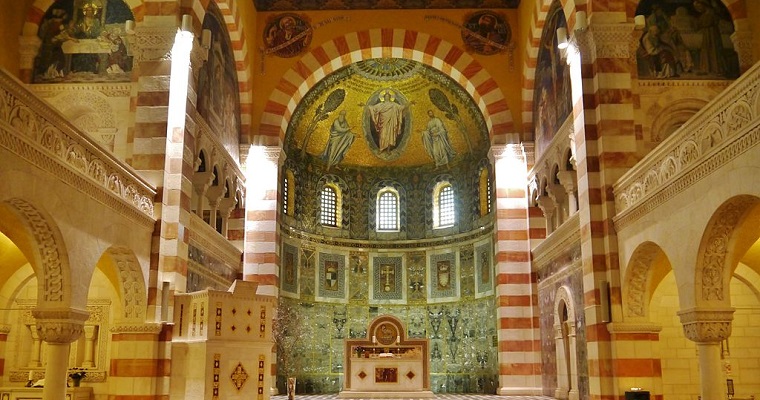
Emotional interaction between a person and a place
According to environmental psychology, the interaction between a person and a place typically begins immediately upon exposure and often occurs subconsciously. When exposed to a new environment, a person undergoes a multistage process: the initial reaction is an emotional response—either liking or disliking the place. This is accompanied by an increased level of stress awareness, driven by the need to anticipate what to expect and the desire to feel secure in the unfamiliar setting[13].
This encounter also triggers feelings of pleasure and excitement, or alternatively, boredom and rejection, influenced by the stimulating qualities of the place such as complexity, incongruity, novelty, prior familiarity, and diversity. These characteristics elicit a response from the organism, either through arousal or exploratory behavior[14]. Places, therefore, evoke emotional responses that can sometimes be intense. Each person will perceive the environment as unique, creating a distinct impact on them compared to others, who will similarly perceive the environment as unique in their own way[15].
This understanding leads to two key conclusions: First, it is essential to seek out environments that produce affects that support the numinous emotional response. Second, it is important to recognize that not everyone will be affected in the same way; thus, identifying the type of individuals who are likely to be influenced is crucial. In terms from the psychology of religion, these individuals might be described as having inner religiosity. Additionally, for a place to truly engage these individuals, it must be suggestive and challenging. It should possess a degree of ambiguity that allows visitors to deviate from their routine perceptions. This ambiguity creates an opportunity for an encounter with the other worldly, with the Sacred, offering an experience that is distinct from the ordinary and mundane.
Places can elicit strong emotional responses in Humans; rooms, neighborhoods, and cities may feel social or threatening. They can provoke a range of affective states including hate, love, fear, or desire. The significance of these emotional reactions to a place lies in their ability to enhance a person’s mental and physical state. This enhancement is manifest in changes to facial expressions, posture, speech patterns, or movement, and persists as long as the visit remains impactful[16]. Positive emotions are linked to an increase in the availability of dopamine D2 receptors, which is associated with reduced impulsivity, the experience of flow, and emotional stability[17]. These conditions can foster an increase in creativity, leading to an altered perception of realityTop of Form
There exists a mutual connection between emotion and cognition; when a place is captivating due to its aesthetics or art, evoking admiration, it alters an individual’s perception, heightening their awareness and drawing attention to previously unnoticed details. Consequently, this scenario can trigger additional emotions, and possibly stir memories or associations, along with cognitive frameworks. Essentially, the place possesses the characteristic of Anamnesis, reminiscent of moments preceding time itself.
Furthermore, an individual possesses three distinct types of memory: sensory memory, short-term memory, and long-term memory. A charismatic Sacred site influences all three concurrently – the visitor engages their senses, triggers a different cognitive pattern than usual, often subconsciously, resulting in an impactful experience that embeds the place in their long-term memory due to its emotional resonance. The memories of visiting sites like the Western Wall or the Church of the Holy Sepulcher endure thanks to the profound emotional encounters they evoke.
There are two forms of explicit memory: semantic memory, which comprises facts, and event memory, encapsulating experiences. The latter encompasses the self and encompasses knowledge linked to place, time, and emotional state. When recalling something learned through event memory, the accompanying experience of when and where naturally surfaces. Hence, the visit to a charismatic Holy site becomes deeply ingrained in memory, thus holding significant sway over an individual’s actions. This aligns with Eliade’s assertion that humans inherently seek Sacred places and moments[18].

Designing charismatic Sacred places
The differentiation between ordinary Sacred places and charismatic Sacred places revolves around the notion that certain places captivate the collective imagination due to miracle narratives, personal transformations, and reported manifestations of sanctity, rendering them charismatic. One defining trait of these locations is that they were conceived, at least partially, through unbounded creativity rather than adhering solely to established templates (such as the basilica in Christianity) or routine planning procedures. In essence, charismatic places were envisioned and constructed from a wellspring of inspiration, in a singular and devout process, affording planners the liberty and resources to devise a distinct architectural scheme that embodies the miraculous or divine occurrences associated with the site. This unconventional approach to planning was pivotal in imbuing these places with a sense of sanctity.
Certainly, scrutinizing the planning processes of Sacred sites established millennia or even centuries ago is exceedingly challenging, if not impossible. Therefore, my doctoral research focuses on examining the planning of two comparatively recent Sacred sites: The Church of the Transfiguration on Mount Tabor and the Zawiya in Acre. These sites offer ample information regarding their planning procedures, enabling an exploration of the correlation between being a charismatic Sacred place and the utilization of inspiration and connection to holiness in their planning processes. Moreover, the research aims to illustrate how granting freedom and flexibility to planners and founders facilitated the expression of the planning outcomes in the construction and design of these sites, and the presence of the Sacredness Generators within.
Symbols and holiness
It could be argued that in numerous instances, a Sacred place, at its core and in broader context, serves as a symbol. For instance, the Dome of the Rock symbolizes Palestinian nationalism and Muslim religiosity (briefly even emblematic of the Templar order), while the Western Wall embodies the connection between the Jewish people and their homeland[19]. Undoubtedly, these sites evoke emotions such as pride or patriotism, yet such interpretations diverge from the intended understanding of symbols within the framework of this work. Therefore, it becomes imperative to emphasise the distinction between sentiments of nationalism and socio-political religiosity, and the internal, experiential, and universal religious sentiments.
According to Otto, the primary numinous (religious) emotion is awe at creation – the profound sense of the insignificance of every creature, culminating in its own dissolution before the transcendent One who exists beyond all creation[20]. This emotion acknowledges the unity and totality of creation, moving counter to the divisive nature of national pride. James posits that religious feeling expands the boundaries of the self[21]. The initial stage of religious experience involves a sense of belonging to a larger whole, relinquishing the ego and embracing a benevolent external reality. This contrasts with the tendency to narrow one’s sense of belonging to specific groups.
The singular inner religious experience is expansive, passive, amiable, and uniting. The influence of Sacredness Generators manifests as a force of unity and connection, rather than division among peoples, genders, religions, and cultures. In essence, the portrayal of encounters with the Western Wall and the Dome of the Rock in this work is viewed through the lens of the universal mystical religious experience, rather than solely through the lens of national emotional impact, which can sometimes be intensified by social experiences within official religious contexts. The genuine experience of the Sacred transcends the personal, offering a non-judgmental depiction of the inner universal process within an individual. From this perspective, I aim to approach the symbols present in Sacred places without narrowly categorizing any particular site as solely a national or religious symbol.
Symbols, at their core, express an alternative reality, that of the Sacred, and therefore serve as a means of connecting with it. According to Corbett, a symbol is bestowed rather than chosen, akin to a sign; it not only indicates an experience but also facilitates it. The symbol functions as a concentrated entity, serving as the locus where humanity encounters the Sacred. It is a Hierophany, participating in an aspect of the divine that can be apprehended within human consciousness, fostering relationships with the Sacred realm. The symbol prompts and guides our focus towards the divine in a specific and beneficial manner. Additionally, as symbols contain personally relevant psychodynamic content, such as the inward journey from self to self, they also possess a healing capacity by fulfilling individual needs. This underscores the simultaneous interplay between the religious and the psychological dimensions[22].
Rannie delves into the understanding of symbols, drawing a distinction between them and archetypes. He draws upon Eliade’s insights, asserting that while there are archetypes rooted in humanity’s existential condition, such as light or standing (upright position), there are also symbols that have evolved and are contingent upon culture and context. This stance contrasts with that of the prominent anthropologist Clifford Geertz, who views symbols as culturally dependent expressions alone. According to Rannie, general archetypes find expression through culture, resulting in various representations and symbols, such as pillars, stones, or mountains, all signifying the center. Regardless, the creative potency of symbols stimulates the imaginative faculties in individuals, aiding in the revelation of Hierophany. The human longing for transcendent reality engenders the creation of symbols, which expand Hierophany beyond mundane existence. Symbols serve as the language of the Sacred and act as mediators between the Sacred and the profane realms[23].
From Geertz’s anthropological perspective on symbols, one can gain a different understanding of Sacred places and their interaction with humanity. Geertz posits that Sacred places are imbued with symbolic significance that not only distinguishes them from other spaces but also imparts meaning through their geography, layout, and architectural aesthetics. These elements facilitate connections, adherence, spirituality, and the cultivation of shared assumptions, such as ethos and worldview, among believers, and sometimes even among others[24]. However, Geertz does not approach the level of religious experience as a phenomenology of perception, nor does he view it as an ontological reality. Instead, he remains within the realms of society and behavior. He states, “Religion is a system of symbols whose action instills in people intense, deeply penetrating, and lifelong moods and motivations, by formulating views about a general world order and clothing these views in such factual attire that the moods and motivations appear to correspond particularly to reality.” [25]
The Western Wall can be approached through Geertz’s method as a national symbol representing belonging to the Jewish collective, conveying associated cultural connotations. Conversely, Eliade’s method interprets it as an embodiment of holiness, a tangible manifestation of Heirophany in stone. These divergent national and inner religious perspectives coexist simultaneously within the Western Wall plaza design, as noted by Western Wall researcher Shmuel Bhatt[26]. In my view, the Western Wall encapsulates symbols and archetypes rooted in Jewish culture, yet it also resonates with universal archetypes inherent in human perception of the world. Therefore, the impact of the Western Wall plaza on visitors transcends mere cultural influence and is intertwined with Eliade’s theories of universal architypes.
Jonathan Smith, an American historian of religions, aligns with Geertz’s perspective, asserting that the symbol system of a Sacred place is a cultural construct. He belonged to the opposing school of thought to Eliade. Smith argued that a map does not inherently constitute a place; rather, it is imbued with social and anthropological concepts that lend it significance. According to Smith, a place is an actively constructed product of intellectualism. He draws upon the ideas of Geertz, Durkheim, and Levi-Strauss, contending that a Sacred place is not merely a response to the Sacred, but rather a creation of the Holy[27].
Conversely, Carl Jung, who greatly influenced Eliade, delves into the universal spiritual significance of symbols and archetypes. In his seminal work, “Approaching the Unconscious,”[28] Jung equates symbols with expressions of archetypes and the subconscious. He posits that symbols emerge within the framework of myth and the process of individuation, possessing transformative and Sacred potency. This perspective found resonance among later scholars such as Rennie and Corbett. The examination of symbols present in Sacred places, as discussed in this work, symbols such as the pentagram in the Druze tomb of Nabi Shuayeb and the octagon in the Sufis’ Zawiya in Acre, draws upon the archetypal universal approach to symbols advocated by Jung, Eliade, and others.
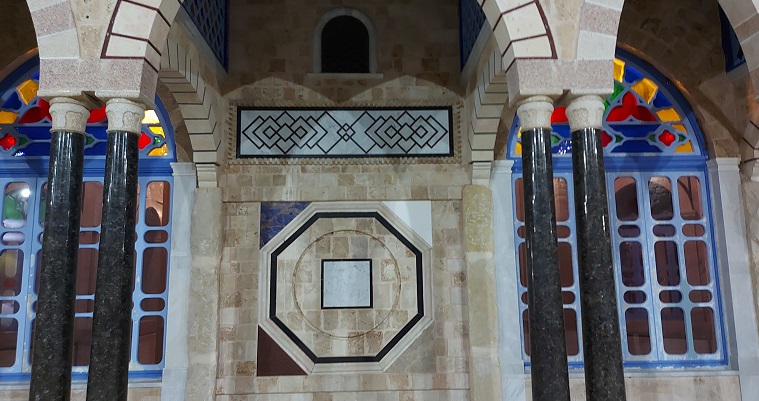
Footnotes
[1] Barrie, The Sacred In-Between
[2] Ibid p. 8
[3] Christian Norberg-Schulz, “The phenomenon of place”, In Michael Larice and Elizabeth Macdonald (eds.), The Urban Design Reader, London: Routledge, 2013, pp. 292-304 (first published in 1976 in Architectural Association Quarterly).
[4] Barrie, The Sacred In-Between, p. 18
[5] Ibid p. 19
[6] Ibid p. 120
[7] Ibid p. 119
[8] Ibid p. 219
[9] Mazumdar and Mazumdar, “Religion and Place Attachment”, p. 390
[10] Barrie, The Sacred In-Between, p. 221
[11] Ralph Waldo Emerson, Nature, London: Penguin, 2008
[12] Barrie, The Sacred In-Between, p. 39
[13] Ittelson et al. An Introduction to Environmental Psychology, p. 96
[14] Ibid p. 74
[15] Ibid p. 96
[16] לפי חנן מוניץ (עורך), פרקים נבחרים בפסיכיאטריה, מהדורה שישית, תל־אביב: דיונון, 2016, עמ’ 139.
[17] Örjan de Manzano, Simon Cervenka, Aurelija Jucaite, Oscar Hellenäs, Lars Farde and Fredrik Ullén, “Individual differences in the proneness to have flow experiences are linked to dopamine D2-receptor availability in the dorsal striatum”, NeuroImage 67 (2013), pp. 1-6
[18] אליאדה, תבניות בדת השוואתית, עמ’ 222, 234.
[19] Oleg Grabar and Benjamin Z. Kedar (eds.), Where Heaven and Earth Meet: Jerusalem’s Sacred Esplanade, Austin: University of Texas Press, 2009, pp. 230-274
[20] אוטו, הקדוּשה, עמ’ 14.
[21] James, The Varieties of Religious Experience, p. 460
[22] Corbett, The religious function of the psyche, p. 97
[23] Rennie, “Mircea Eliade and the Perception of the Sacred in the Profane”, p. 50
[24] קליפורד גירץ, פרשנות של תרבויות, תרגם: יואש מייזלר, ירושלים: כתר, 1990, עמ’ 123.
[25] שם 91
[26] בהט, “‘להבדיל בין קודש לחול'”, עמ’ 176.
[27] Jonathan Z. Smith, Map is not Territory: Studies in the History of Religions, Leiden: Brill, 1978, p. 22
[28] Jung, “Approaching the Unconscious”, p. 85
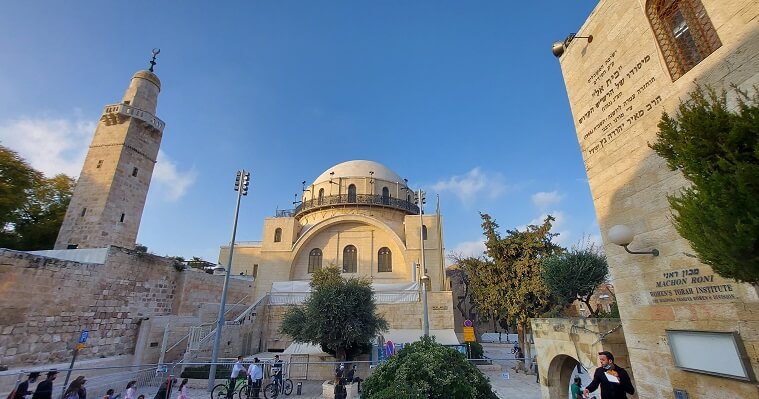
Bibliography
Barrie, Thomas, The Sacred In-Between: The Mediating Roles of Architecture, Abingdon: Routledge, 2010.
Corbett, Lionel, The Religious Function of the Psyche, London: Routledge, 1996.
de Manzano, Örjan, Simon Cervenka, Aurelija Jucaite, Oscar Hellenäs, Lars Farde and Fredrik Ullén, “Individual differences in the proneness to have flow experiences are linked to dopamine D2-receptor availability in the dorsal striatum”, NeuroImage 67 (2013), pp. 1-6.
Emerson, Ralph Waldo, Nature, London: Penguin, 2008.
Grabar, Oleg, and Benjamin Z. Kedar (eds.), Where Heaven and Earth Meet: Jerusalem’s Sacred Esplanade, Austin: University of Texas Press, 2009.
Ittelson, William H., Harold M. Proshansky, Leanne G. Rivlin, and Gary H. Winkel, An Introduction to Environmental Psychology, New York: Holt, Rinehart and Winston, 1974.
James, William, The Varieties of Religious Experience: A Study in Human Nature, Cambridge, Mass: Harvard University Press, 1902.
Jung, Carl G., “Approaching the Unconscious”, in idem et al., Man and His Symbols, London: Aldus Books in Association with W. H. Allen, 1964, pp. 1-94.
Mazumdar, Shampa, and Sanjoy Mazumdar, “Religion and Place Attachment: A Study of Sacred Places”, Journal of Environmental Psychology 24 (2004), pp. 385-397.
Norberg-Schulz, Christian, “The phenomenon of place”, In Michael Larice and Elizabeth Macdonald (eds.), The Urban Design Reader, London: Routledge, 2013, pp. 292-304.
Rennie, Bryan S., “Mircea Eliade and the Perception of the Sacred in the Profane: Intention, Reduction, and Cognitive Theory”, Temenos 43 (2007), pp. 73-98.
———-, Reconstructing Eliade: Making Sense of Religion, Albany, NY: State University of New York Press, 1996.
Smith, Jonathan Z., To Take Place: Toward Theory in Ritual, Chicago, IL: University of Chicago Press, 1987.
———-, Map is not Territory: Studies in the History of Religions, Leiden: Brill, 1978.
אוטו, רודולף, הקדושה: על הלא־רציונלי באידיאת האל ויחסו לרציונלי, תרגמה: מרים רון, תל־אביב: כרמל, 1999.
אליאדה, מירצ’ה, תבניות בדת השוואתית, תרגם: יותם ראובני, תל־אביב: נמרוד, 2003.
גירץ, קליפורד, פרשנות של תרבויות, תרגם: יואש מייזלר, ירושלים: כתר, 1990.
מוניץ, חנן (עורך), פרקים נבחרים בפסיכיאטריה, מהדורה שישית, תל־אביב: דיונון, 2016.
